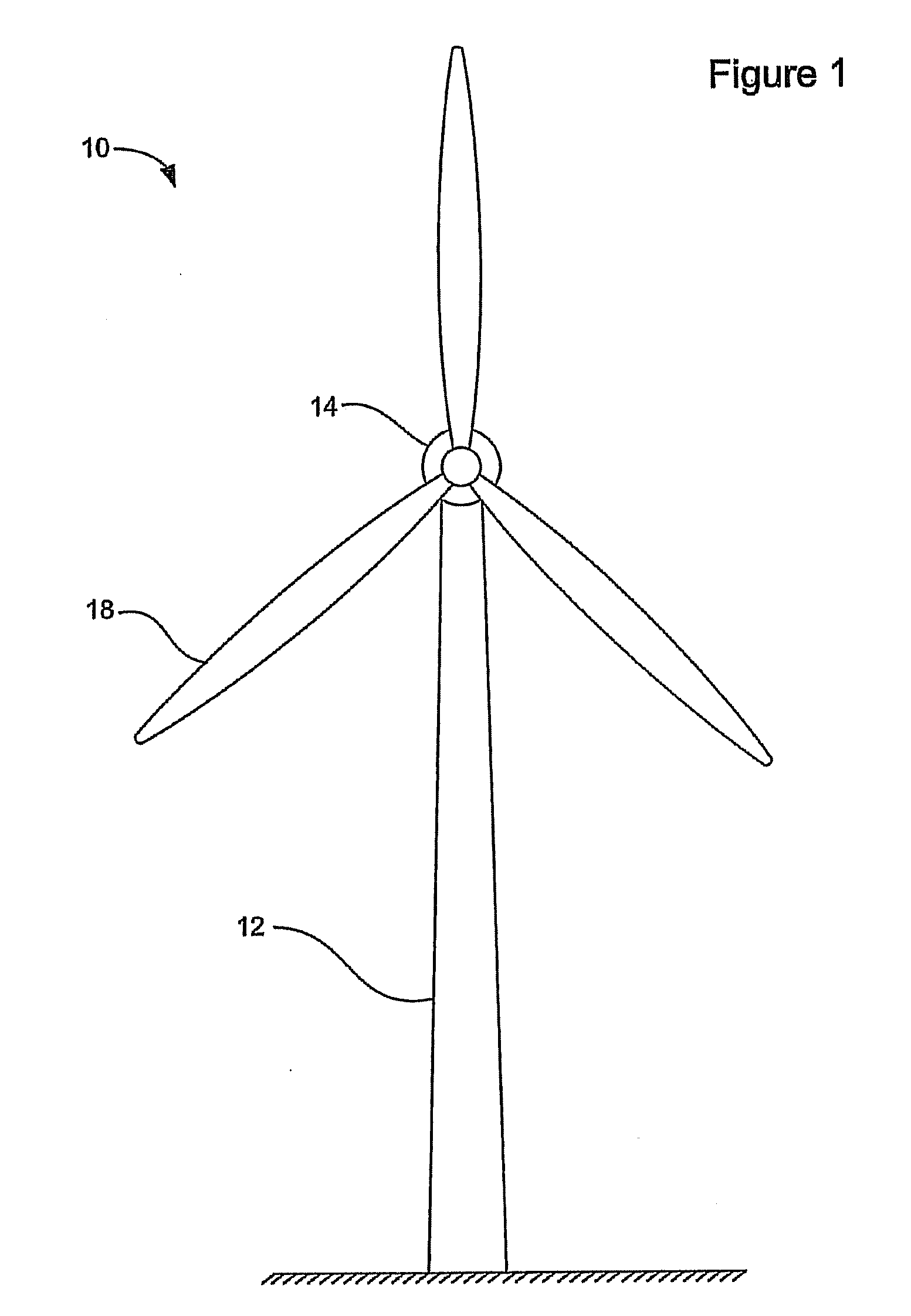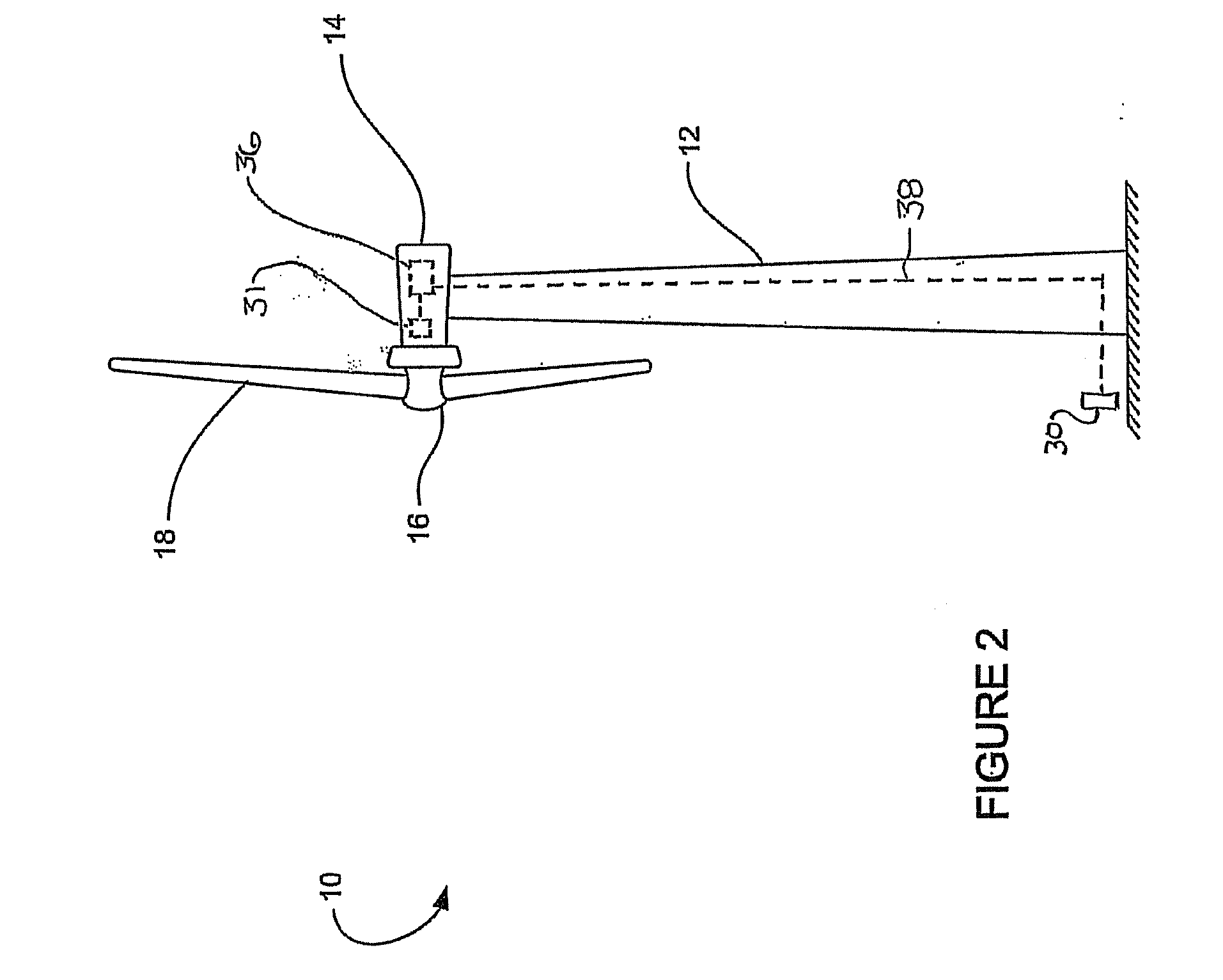Variable speed operating system and method of operation for wind turbines
a technology of variable speed and operating system, which is applied in the direction of machines/engines, engine starters, liquid fuel engines, etc., can solve the problems of permafrost structures, tree and other vegetation may die or tilt, and the active layer may become over saturated with water
- Summary
- Abstract
- Description
- Claims
- Application Information
AI Technical Summary
Problems solved by technology
Method used
Image
Examples
Embodiment Construction
[0017]Electrical power may be generated by many different methods. The most common methods involve the boiling of water using fossil or nuclear based fuels. The steam produced by the boiling is used to rotate a turbine that drives an electrical generator to create the electrical power. While these common methods are very efficient, they also have undesirable side effects, such as the production of toxic pollutants, or the rely on a dwindling natural resource. One alternate method of creating electrical power is to harness a renewable natural resource such as the wind to be a driving force to rotate the electrical generator to produce the electricity.
[0018]Referring to FIG. 1 and FIG. 2, a wind turbine 10 capable of generating electrical power in the 100 kw to 10 MW range is shown. The wind turbine 10 is includes a tower 12 which is anchored to the ground by means of a bolted connection to a steel and concrete foundation as will be described in more detail below. On the opposing end ...
PUM
 Login to View More
Login to View More Abstract
Description
Claims
Application Information
 Login to View More
Login to View More - R&D
- Intellectual Property
- Life Sciences
- Materials
- Tech Scout
- Unparalleled Data Quality
- Higher Quality Content
- 60% Fewer Hallucinations
Browse by: Latest US Patents, China's latest patents, Technical Efficacy Thesaurus, Application Domain, Technology Topic, Popular Technical Reports.
© 2025 PatSnap. All rights reserved.Legal|Privacy policy|Modern Slavery Act Transparency Statement|Sitemap|About US| Contact US: help@patsnap.com



